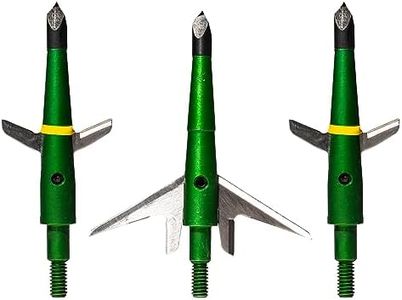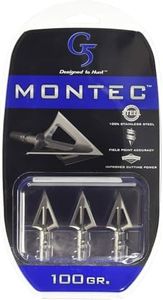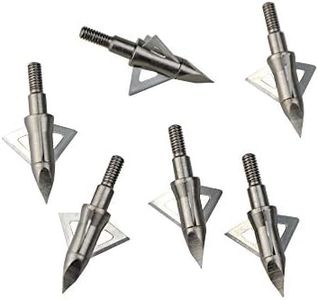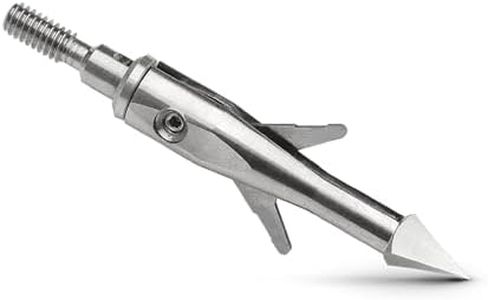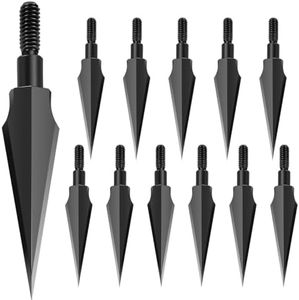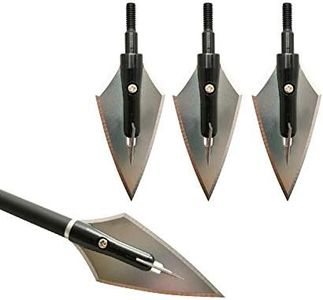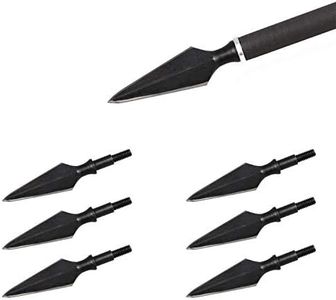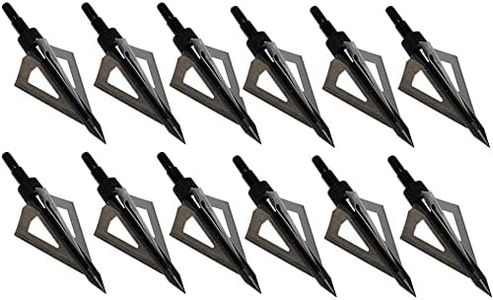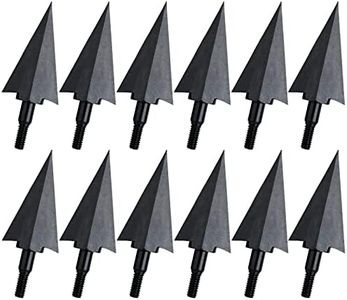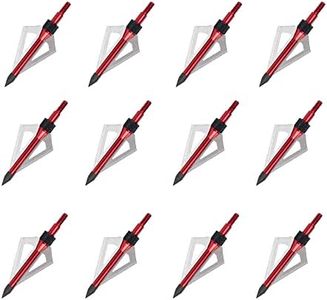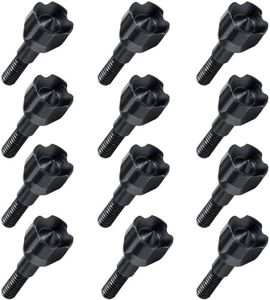We Use CookiesWe use cookies to enhance the security, performance,
functionality and for analytical and promotional activities. By continuing to browse this site you
are agreeing to our privacy policy
10 Best Crossbow Broadheads
From leading brands and best sellers available on the web.Buying Guide for the Best Crossbow Broadheads
Choosing the right crossbow broadhead is crucial for ensuring an effective and ethical hunt. Broadheads are the tips attached to your arrows, and they determine how well the arrow penetrates, how quickly it brings down your target, and how strong and accurate your shot will be. While many broadheads might look similar, various features are optimized for different uses and hunting styles. Knowing what each feature means and how it relates to your hunting needs will help you make a smart, safe, and suitable choice.Blade TypeThe blade type refers to whether the broadhead has fixed blades (blades are stationary and don't move) or mechanical blades (blades expand on impact). Fixed blades are generally known for their reliability and simplicity, making them less likely to malfunction and easier to use in tough conditions. Mechanical blades, on the other hand, offer a larger cutting diameter and often fly more like field points, which means the broadhead is more aerodynamic until it opens upon hitting a target. If you value reliability in any weather or want less worry about moving parts, fixed might fit you best. If you're seeking larger wound channels and better flight performance but are comfortable with a bit more complexity, mechanical blade types could suit you.
Cutting DiameterCutting diameter refers to the width of the wound the broadhead will create as it passes through the target. A smaller cutting diameter usually ensures deeper penetration, which is important for larger or tougher animals, while a larger diameter increases the chance of a quicker, more humane take-down by causing more damage. For hunting big or thick-skinned game, smaller cutting diameters around 1 to 1.5 inches are typically favored for penetration. For medium or smaller game, or when a blood trail is a priority, larger diameters, sometimes up to 2 inches, can be preferable. Think about what kind of animal you’ll be hunting and choose a cutting diameter that balances penetration and wound size.
Blade CountThis is the number of blades on the broadhead, often ranging from two to four. More blades generally mean more cutting edges and a larger wound, but can also reduce penetration due to increased resistance. Two-blade broadheads are often chosen for deep penetration while three- or four-blade models are selected for making a larger wound and increasing blood loss, making tracking easier. If you prioritize penetration or are hunting larger animals, fewer blades might work best; if you want to maximize bleeding and quick recoveries, more blades are ideal.
WeightBroadhead weight is typically measured in grains, with common sizes ranging from 100 to 150 grains. The weight influences how the arrow flies, its impact force, and its compatibility with your crossbow’s recommended arrow weight. Lighter broadheads can improve speed but might reduce penetration, while heavier ones slow down the arrow slightly but boost its potential for deep penetration and energy transfer. Match the broadhead’s weight with your crossbow manufacturer’s recommendations and consider your intended game—heavier broadheads for bigger animals, lighter ones for smaller game or longer distances.
MaterialBroadheads are commonly made of stainless steel, carbon steel, or aluminum, and sometimes combine these materials for the ferrule (the body) and blades. Stainless steel resists rust and stays sharp, while carbon steel can be even sharper but may need more maintenance. Aluminum is lightweight, which can help with speed, but may not be as strong. If durability and low maintenance matter, stainless steel is a safe bet. If sharpest performance and light weight are your priorities and you’re willing to do some upkeep, consider carbon steel or models with aluminum components.
Flight PerformanceFlight performance is about how accurately the broadhead flies when shot from your crossbow. Some broadhead designs are specifically made to mimic field points, which are what you normally practice with, while others may catch more wind and be harder to tune. If you want your hunt shots to closely match your practice, look for broadheads advertised for 'field-point accuracy.' Also consider the compatibility with your chosen arrows and your crossbow’s power, since high-speed crossbows often do better with more aerodynamic broadheads. If you are after high accuracy and consistent shooting at longer ranges, prioritize models known for stable flight performance.
